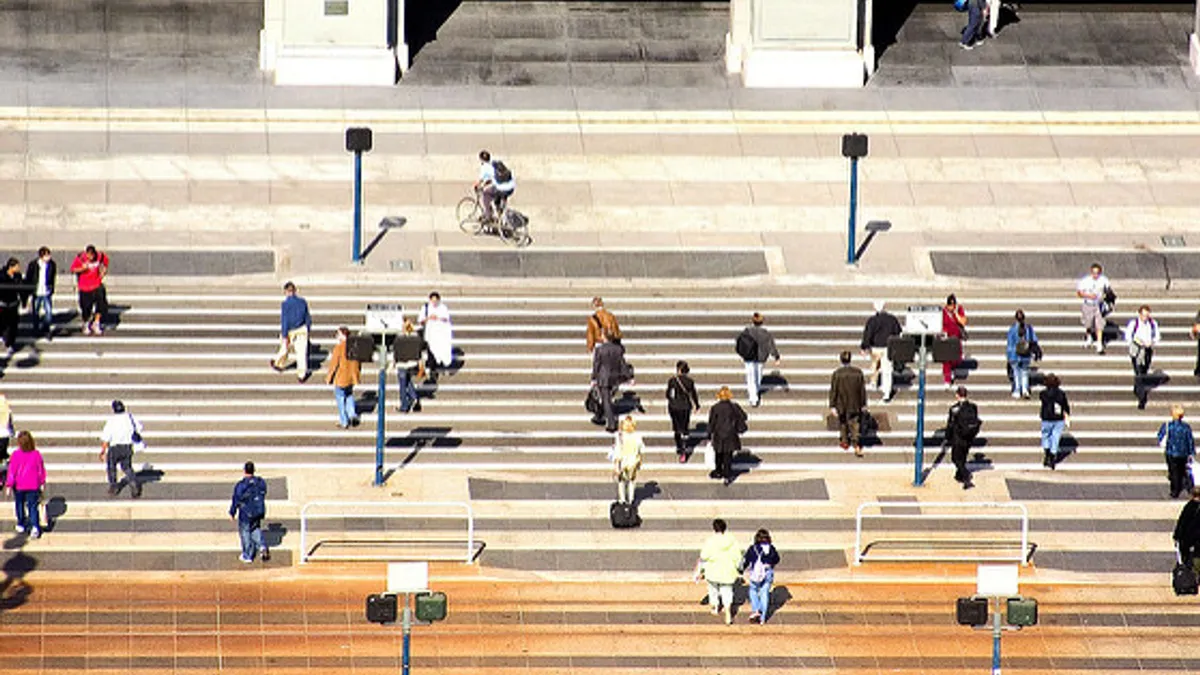Dive Brief:
- The Governors Highway Safety Association's (GHSA) annual Spotlight on Pedestrian Traffic Fatalities report estimates an 11% increase in the number of persons on foot killed on U.S. roadways in 2016 as compared to 2015.
- GHSA said potential factors contributing to the spike include low gas prices and an increase in vehicle miles traveled; more people who chose to walk as a transportation method for health and economic reasons; and increased distractions due to smartphone usage.
- The fatality increase comes as dozens of cities aim for "Vision Zero," or reducing traffic fatalities to zero, including people in cars, walkers and bikers on the street.
Dive Insight:
According to the report, which uses preliminary data, states reported 2,660 pedestrian deaths for the first six months of 2016, compared to 2,486 deaths during the same time period in 2015. Using these figures and historic trends, GHSA estimates that there were 5,997 pedestrians killed in 2016. Pedestrians now account for the largest proportion of traffic fatalities recorded in the last 25 years.
The study further found that 82% of pedestrian fatalities in 2016 occurred outside of the intersection. While this information is unfortunate, it is indicative of where progress needs to be made. Outside of increasing the time allotted to cross at intersections or making streets more well-lit, city planners must keep other areas of the roadway — highway shoulders, bike lanes, neighborhood streets — in mind for improvement.
Vision Zero has become popular across the U.S. with initiatives happening in cities like New York, Sacramento, Chicago, San Antonio and Seattle. At the federal level, the U.S. Department of Transportation’s National Highway Traffic Safety Administration, the Federal Highway Administration and other associations launched the Road to Zero coalition with the goal of ending fatalities on the U.S. roads within the next 30 years. As additional initiatives pop up, it'll become more crucial for officials to evaluate studies from GHSA and other organizations to develop solutions to keep residents safe.
Some cities right outside of the continental U.S. have also been drawing attention to pedestrian safety through grants and innovative solutions. In Puerto Rico, the cities of Pharr, San Juan and Alamo have announced $2.28 million in funding for the Tri-City Pedestrian Safety Improvements Project to extend sidewalks and propose safe routs around schools. Additionally, Toronto company Myant recently developed a wearable tech dubbed the VX360 to increase visibility of pedestrians across the city at night in response to a spike in pedestrian injuries and deaths.











